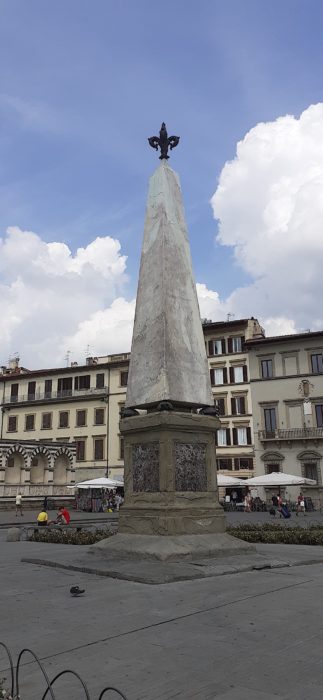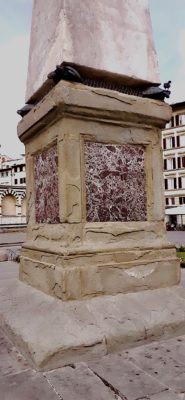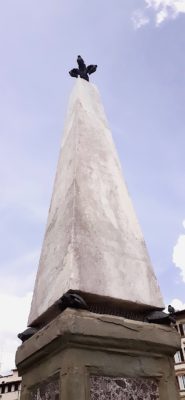
Age
XVI-XVII centuries until XX century
Designers
Bartolomeo Ammannati, Raffaello and Giovanni Maria Carli
The two obelisks, located in the garden of Piazza Santa Maria Novella, were originally made of wood. In 1563 they were placed temporarily in the square, as goals for the Palio de’ Cocchi, which was run in Piazza Santa Maria Novella on the eve of San Giovanni (June 23rd). Due to the importance of the competition, it was decided to realize the obelisks in a more resistant material. Therefore, around 1570, under the supervision of Bartolomeo Ammannati, two monumental blocks of rock were extracted from the quarries of Breccia di Seravezza in the Apuan Alps; then they were transported and worked by Raffaello and Giovanni Maria Carli (1572). The obelisks were put in place only in 1608 for the marriage of the Grand Duke Cosimo II and Margherita of Austria. They display a stone base and four Bronze turtles, traditionally referred to Giambologna or his assistants, under the stem. At the end of the eighteenth century, the obelisks were modified: they were raised through a base in Pietra Serena Sandstone having panels in Breccia di Seravezza (1791). Again at the end of the eighteenth century the obelisks were enriched by Bronze lilies placed on the top. The obelisks underwent a restoration in 1889-1890. The current panels (sixties of the twentieth century) which replaced the originals are in Red Levanto Marble.
The obelisks are made of Breccia di Seravezza; the turtles at the base of the stem and the lilies on the top, are in Bronze; the base is in Pietra Serena Sandstone with decorative panels in Rosso Levanto Marble.

